What Is a Foley Catheter?
This post was reviewed by our Director of Clinical Excellence and Oversight.
The Foley catheter is a thin, flexible tubes used to pass urine from the bladder. Like other indwelling catheters, Foley catheters are designed to remain in the bladder for a longer period of time. Created by Frederic Foley in 1929, the Foley catheter is currently the most popular type of indwelling catheter used.
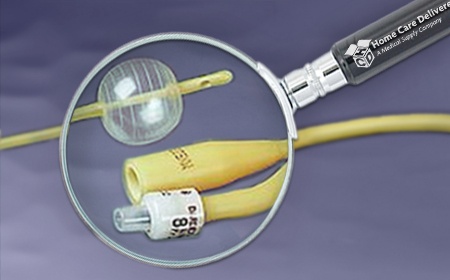
How a Foley Catheter Works
Foley catheters are inserted through the urethra and up into the bladder. Small openings in the tip, called eyelets, allow urine to flow through the catheter into the collection bag.
To keep the Foley catheter in place, sterile water is injected through a second channel in the catheter. This water inflates the balloon, preventing the catheter from falling out.
In most cases, Foley catheters remain in the urethra for a month at a time. This makes them easier to manage, but also comes with a slightly higher risk of infections such as a urinary tract infection (UTI).
Parts of a Foley Catheter
There are four basic parts that make up most straight catheters:
Tubing
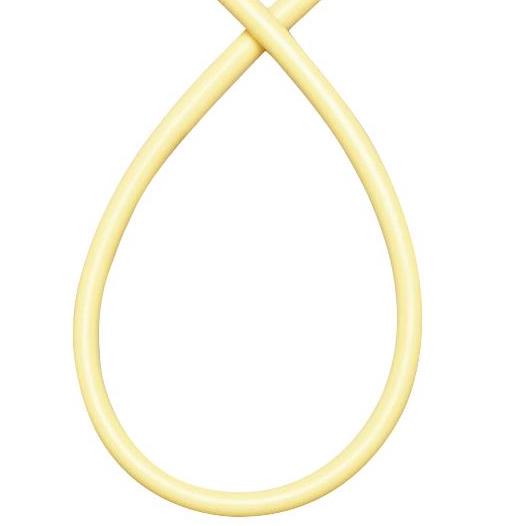
Flexible, hollow tubing usually made of latex that allows the flow of urine.
Balloon
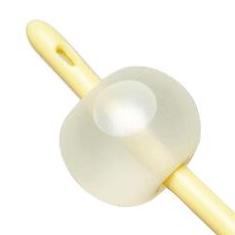
A small inflatable balloon at the tip of the catheter that can be inflated or deflated with sterile water.
Port
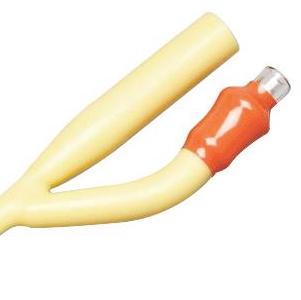
Small latches that connect the catheter to a collection bag and inflate the balloon at the tip.
Drainage Bag
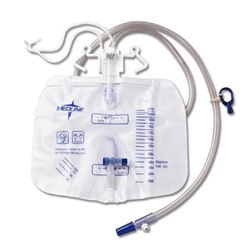
A leak-proof pouch that attaches to the catheter and collects urine as it exits the body. Collection bags come in a variety of different styles and sizes.
Styles of Foley Catheters
Foley catheters come in various styles and designs. Here are a few of the most common ones:
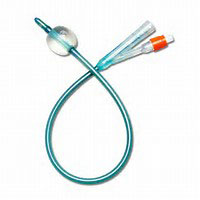
Two-Way Foley Catheter
The standard type of Foley catheter. They have two ports: one for the flow of urine and one for inflating the balloon.
Three-Way Foley Catheter
A Foley that has three ports: one for the flow of urine, one for inflating the balloon, and one for flushing the catheter clean with sterile water.
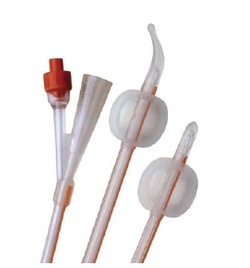
100% Silicone Catheter
A Foley catheter made entirely from Silicone. 100% Silicone catheters can come as both two-way or three-way styles.
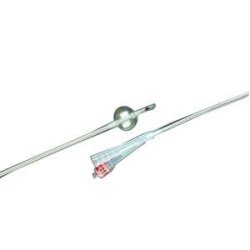
Coated Catheter
Coated Catheters are made of latex and also are overlaid with another substance or material.
*To learn about other catheters, visit our Types of Catheters Guide.
Who Uses a Foley Catheter?
Foley catheters are prescribed for men and women who cannot use a catheter themselves, or who have mobility issues that would prevent them from being able to use an intermittent catheter. Common situations requiring a Foley could include quadriplegia, being bedridden, or mental impairments.
Insurance Coverage of Foley Catheters
Foley Catheters are covered by most insurance plans, including Medicaid, Medicare, and private insurance. Each insurance plan has its own rules and requirements for coverage, but every plan will require a prescription from a doctor.
The number of Foley catheters you can receive depends on your insurance and the doctor’s instructions.
**To learn about Medicare coverage of all urology products,
visit our Guide to Medicare Coverage of Urology Supplies.
How To Get Foley Catheters
If you’re getting Foley catheters for the first time, or if you’re looking for a new supplier, contact our team of experts. They will help make sure you get what you need as quickly and smoothly as possible.
Our ordering process takes only minutes to complete. In most cases, your supplies will arrive at your door within 48 hours of being shipped. Don’t worry about any of the paperwork. We do that for you.
Get Urology Supplies Delivered to Your Door
Accurate Orders | Fast Delivery | Product Expertise
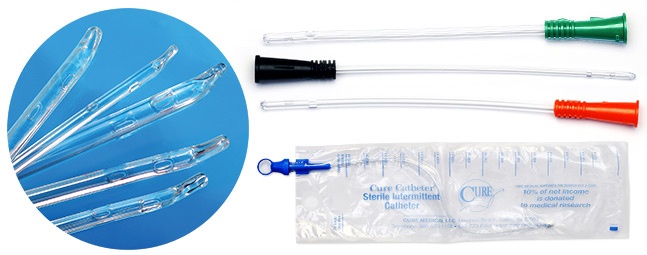
Disclaimer:
Unless otherwise noted, the recommendations in this document were obtained from the sources indicated. Be advised that information contained herein is intended to serve as a useful reference for informational purposes only. HCD cannot be held responsible for the continued accuracy of or for any errors or omissions in the information. All trademarks and registered trademarks are the property of their respective owners.
